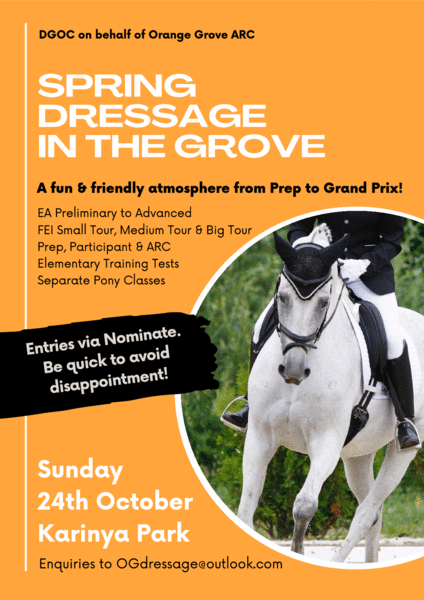The EWA Horse Welfare committee has had a discussion around the use of the whip in our sports after concerns were raised by members about the use of the whip “overhand”.
The committee reached a consensus that making the decision to turn the whip over in the rider’s hand (as pictured below) and using it on the horse with the increased force that comes with this method is not in the interest of best horse welfare, and nor is it beneficial for the long term social license of the sport.
The committee members were tasked to discuss this further with their individual discipline committees as a group, and assess their individual rules when it comes the whip. It was found that the rules vary quite dramatically from discipline to discipline.
As EA is conducting a full review of all their national discipline rules, with a view to unify and simplify them across the codes, the EWA Welfare Committee hopes that the use of the whip, and other rules around ethics and welfare, are addressed and clarified.
Let’s have a look at the ethics of using the whip “overhand”.
For the purpose of this post, “overhand” means turning the whip over in the hand, so that the long part now exits the hand from the thumb, rather than the little finger. (as in the image on the right, below). The definition of “overhand” in some of the sports rules is not made clear, or can mean something different to this.
In the opinion of the welfare committee, using the whip overhand is a breach of welfare for the following reasons:
1. The whip is not designed to be used in this manner- hence it is equipment being used not as it intentioned.
2. The whip used in this manner can be used to apply significantly more force. A rider’s whip is there as an aid to communication, not as tool to punish, and by applying more force the committee feels this is no longer communication, but punishment.
3. The decision making process in order for a rider to consciously shift the whip position in their hand in this manner is often (through observation) made under pressure to perform or frustration at lack of performance.
4. The whip or indeed any aid should never be used in anger or frustration, and when it is detrimental to the horse and achieves nothing in terms of training.
The welfare committee would like all riders, parents and coaches to consider this question when thinking about how they use the whip in competition or training: Would you turn a stick over in your hand in this manner to hit a child? Or your pet dog? One would hope not. So, if you would not hit a child or a dog in this manner, why would we think that hitting a horse in this manner is acceptable?
Anita Marchesani
Horse Welfare Committee Chair.















































